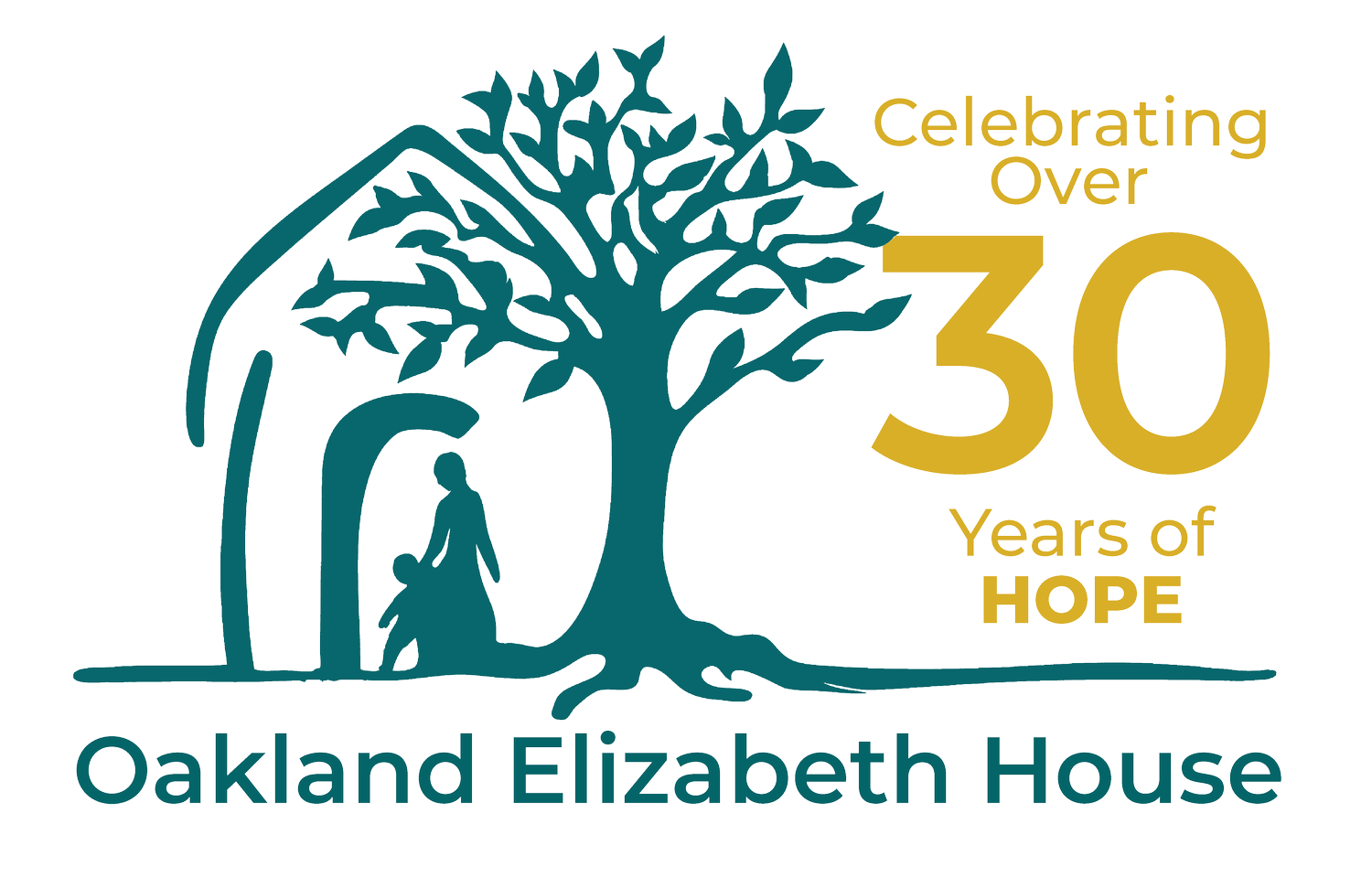Our Mission
Our mission is to support women and children transition to independence by creating and maintaining a nurturing, cooperative living environment that provides hospitality, resources, and respect.
Established in 1991, Oakland Elizabeth House (Ehouse) is a transitional residential program for women with children who have experienced homelessness, domestic violence, addiction, or poverty. Our mission is to support these women and children in their transition to independence. Ehouse is a nurturing, cooperative living environment that provides resources, hospitality, and respect. Ehouse is one of only three facilities in Oakland that provides transitional housing to women and their children.
Since 1991, we have served 160 mothers and 170 children, 80% of the families have moved into permanent housing after leaving Elizabeth House. While we can help only ten families at a time, we work with the women and children intensively to enable them to transition to self-sufficiency.
THE HOUSE
Oakland Elizabeth House is 1 of only 3 facilities in the Bay Area that provides transitional housing to women and their children.
In 1994, three years after our creation, we opened Ehouse in the former convent of St. Augustine’s church, on a residential street in the Rockridge area of North Oakland. The house has ten bedrooms, each with sink, closet, and space for beds that can be occupied by the resident and one to three children. Rooms are small, but kept neat and clean. The House also has welcoming communal living spaces, with a large kitchen and dining room, living room, computer room, art supply room, wooden deck. There is a large gated play area for the children in the backyard and space for an edible garden.
We typically house 10 mothers and 12-16 children at any one time.
HISTORY
Ehouse was created by Pat Lindstadt in response to the needs of homeless women and children she met on the streets of Berkeley and Oakland. She continues to be connected to Ehouse. Ehouse is named for the New Testament’s St. Elizabeth, to whom Mary went when she learned she was pregnant. Mary then lived with St. Elizabeth, who was her aunt. The newspaper called The Catholic Worker was founded in 1933 by Dorothy Day and Peter Maurin in depression-era New York City, beginning the Catholic Worker Movement. Today, hundreds of churches, soup kitchens, houses of hospitality (like Ehouse), and other organizations continue to see themselves in this tradition. We provide services consistent with the aim of the Catholic Worker Movement to achieve a just society in which the freedom and dignity of people are fostered and in which the good of each promotes the good of the whole. Initial funding for Ehouse was from three Catholic parishes in Oakland (Corpus Christi, St. Augustine, and St. Theresa), who are still supportive, providing Board members, volunteers, and donors.


